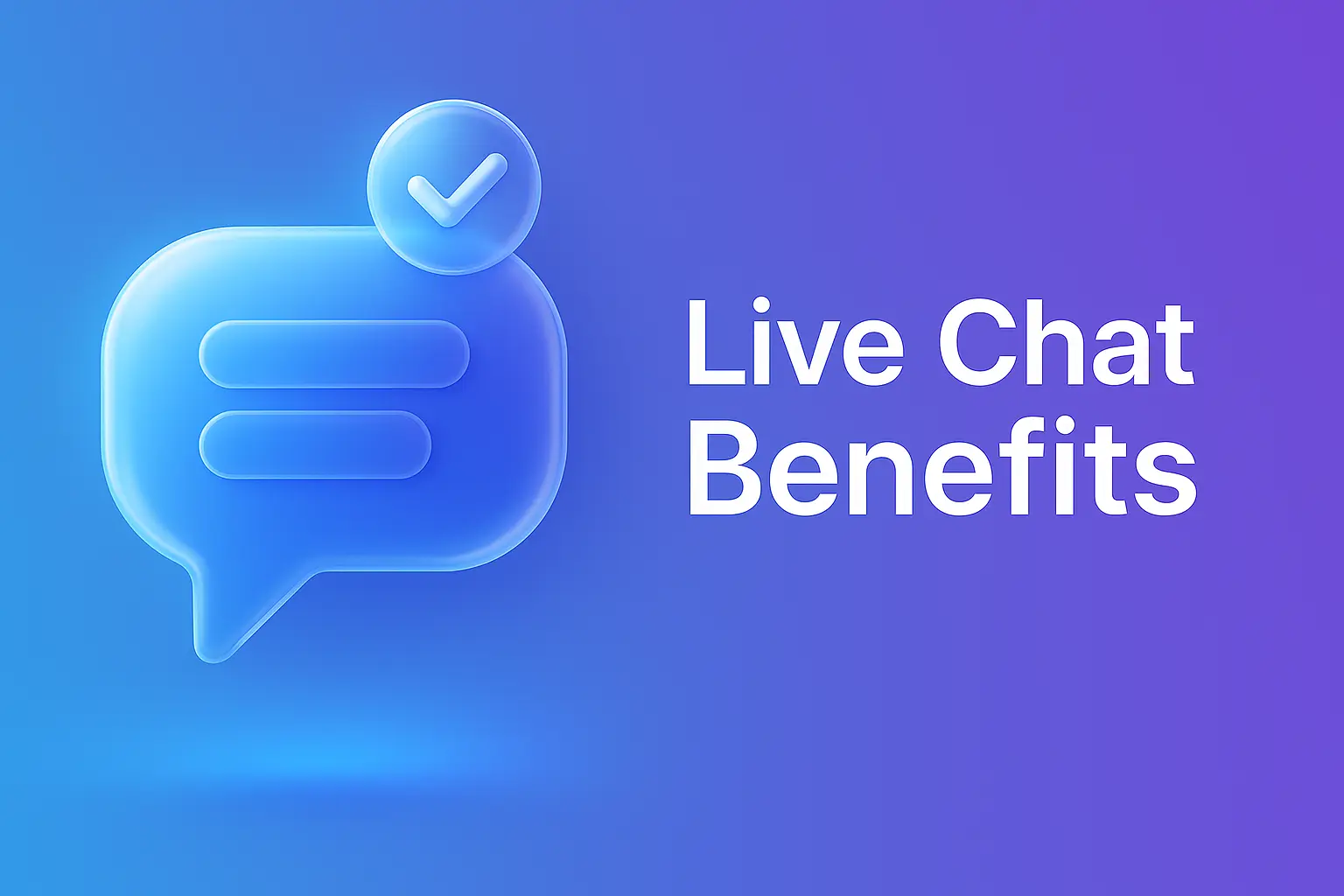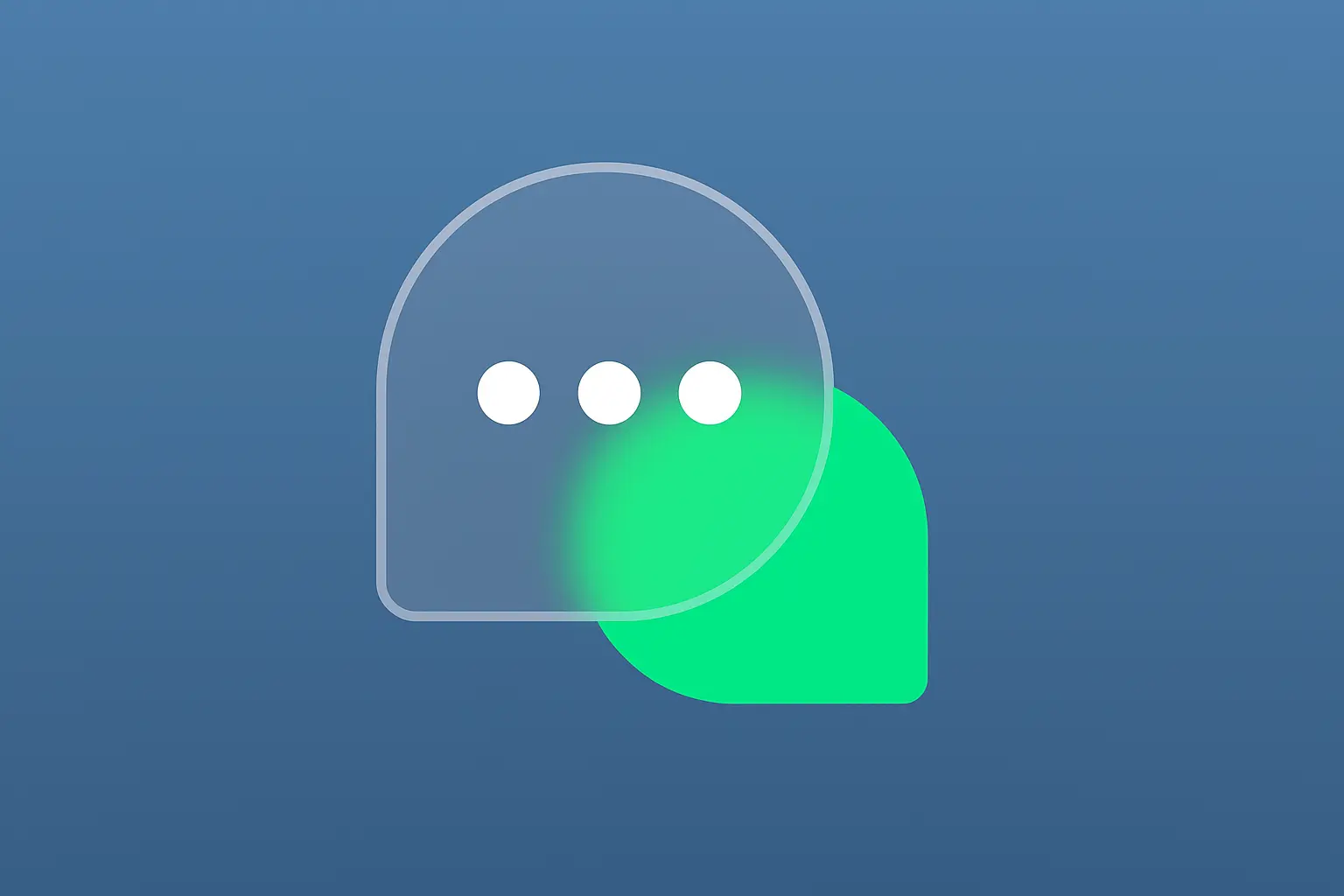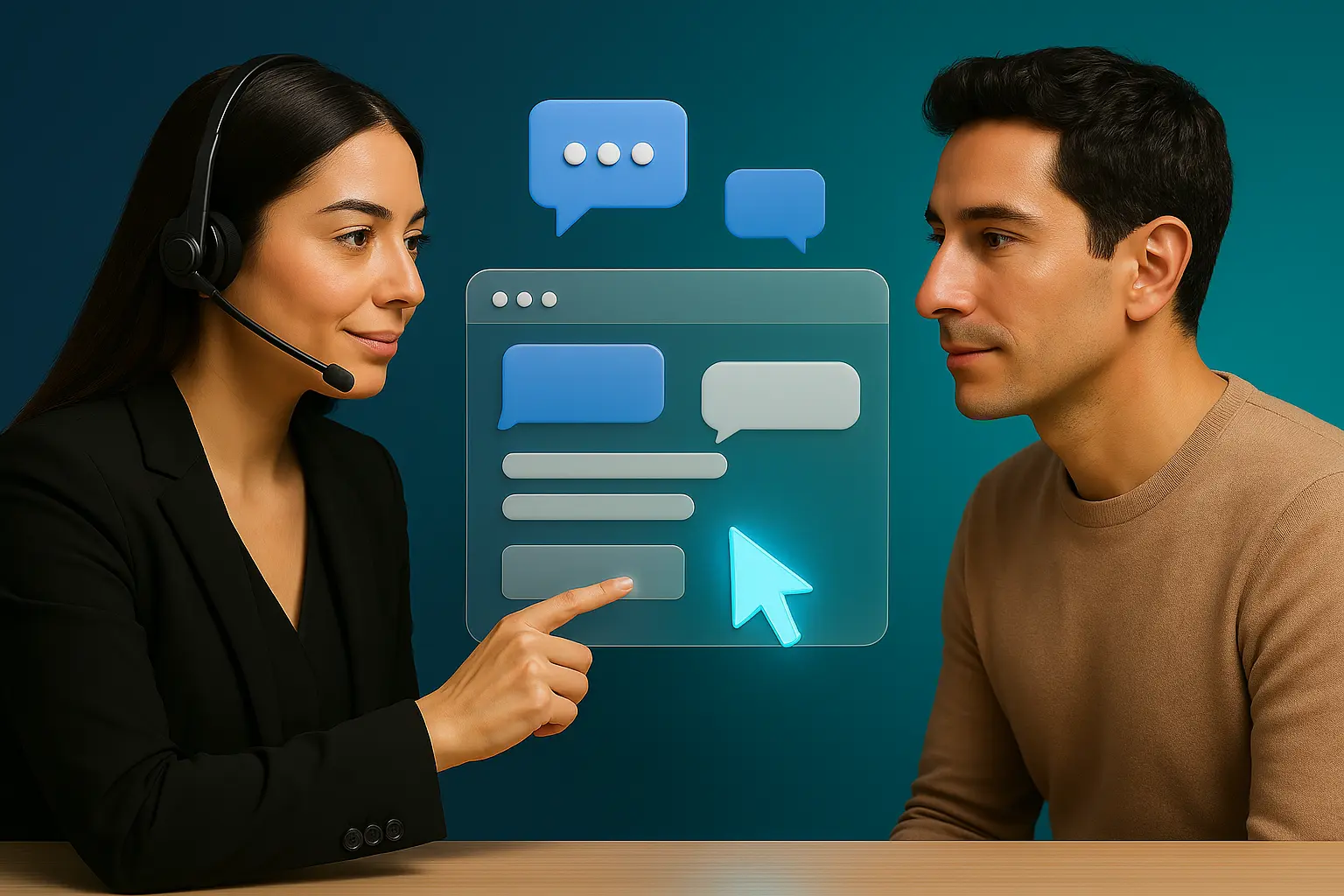Live Chat vs Instant Messaging: Which One Is Right for Your Business?
- September 1, 2024
- 13 mins read
- Listen

Nowadays many businesses provide live chat to connect with their customers in real-time, and people are getting used to this way of communication. However, there’s a new option on the rise: instant messaging. As companies look for the best ways to communicate quickly and effectively, they often find themselves deciding between these two popular tools.
Both live chat and instant messaging offer real-time interaction, but they serve different purposes and can greatly affect customer satisfaction. A study by HubSpot found that 82% of consumers expect an immediate response from brands on sales or marketing questions, highlighting the need for instant communication.
Live chat vs instant messaging, deciding between these two isn’t always easy. That’s why, in this blog, we’ll break down the differences between the two and help you decide which one is right for your business. By the end, you’ll have a clear understanding of which option to choose and when. So, let’s dive in!
What is Live Chat?
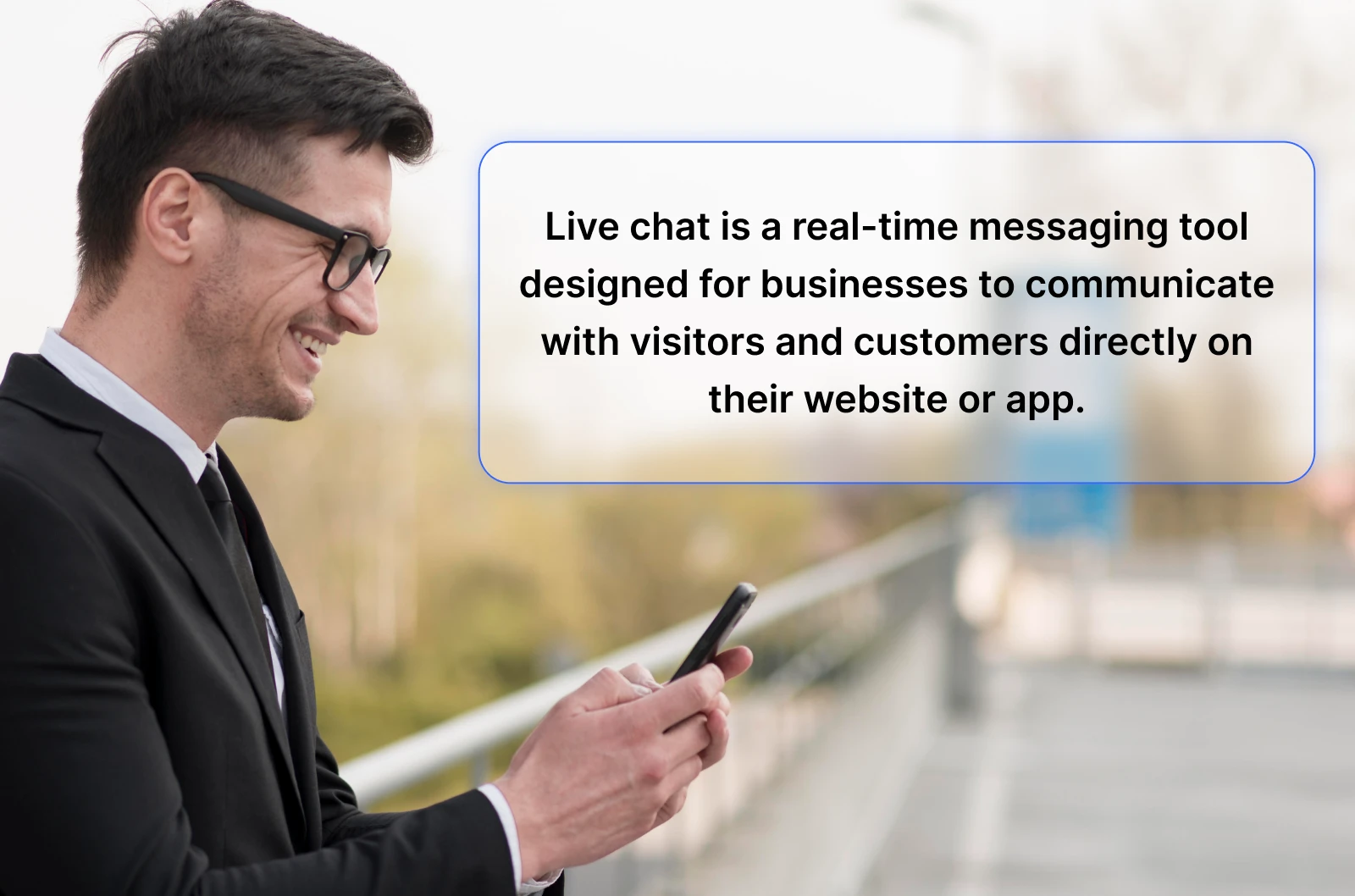
Live chat is a real-time messaging tool designed for businesses to communicate with visitors and customers directly on their website or app. It’s similar to a small chat box appearing on a website, allowing you to talk instantly with a customer service agent or chatbot. Many companies today rely on live chat software for small business to boost engagement, respond faster, and build stronger customer relationships without needing a large support team.
Many e-commerce websites and company websites have live chat functionalities. For instance, while browsing a clothing website, you might notice a chat window pop up in the corner of your screen. You can use this window to ask a customer service representative about sizing or the latest offers. The representative will reply to you when they’re online or during business hours.
Live chat isn’t just limited to eCommerce or SaaS. Live chat for real estate is transforming how agents connect with clients, offering immediate, personalized support that helps close deals faster.
What is Instant Messaging (IM)?
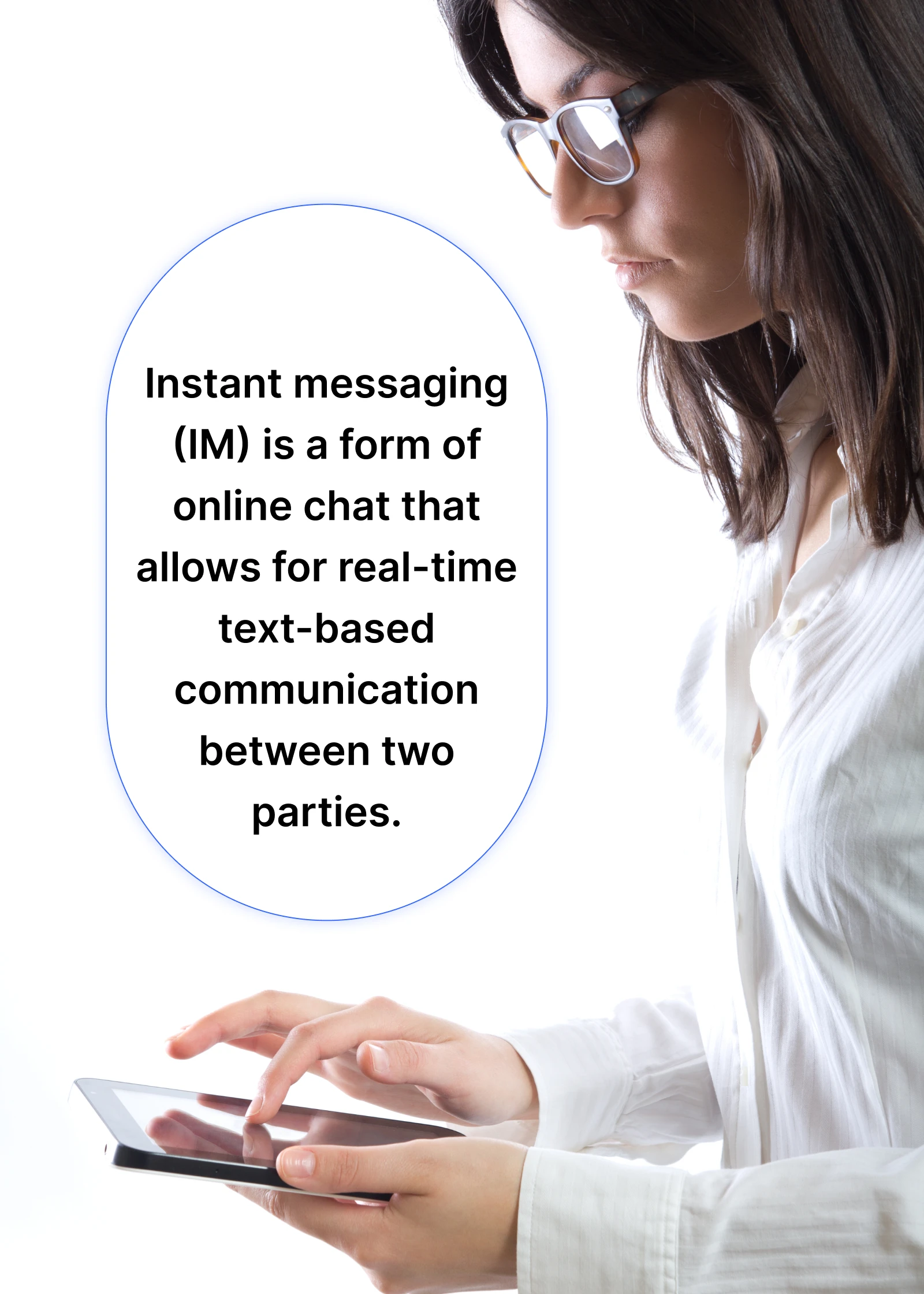
Instant messaging (IM) is a form of online chat that allows for real-time text-based communication between two parties. It’s like having an ongoing online conversation, similar to a text message conversation, but on a dedicated platform.
For example, popular instant messaging apps include WhatsApp, Facebook Messenger, Telegram, and WeChat. These apps allow you to chat with friends, family, colleagues, or anyone else on your contact list, as long as they have the same app installed.
The Differences Between Live Chat and Instant Messaging (IM)
Despite both being essential in customer engagement, few factors show the differences between Instant Messaging and Live Chat.
Let’s give you some insights into these factors:
|
Live Chat |
Instant Messaging |
|
|
Type |
|
|
|
Data Synchronization |
|
|
|
Customer Interaction |
|
|
|
Support time |
|
|
|
User Convenience |
|
|
|
Workflow Management |
|
|
|
Chat History |
|
|
|
Collaboration |
|
|
|
Scalability |
|
|
|
Cost-Effectiveness |
|
|
|
Data Security |
|
|
|
Purpose |
|
|
|
Accessibility |
|
|
|
Expectations |
|
|
Live Chat and Instant Messaging: Which One is Better?
Here comes the dilemma when you have to choose between Live Chat and Instant Messaging. They both have their own sets of advantages and disadvantages. Let’s look at some examples,
Live Chat Advantages
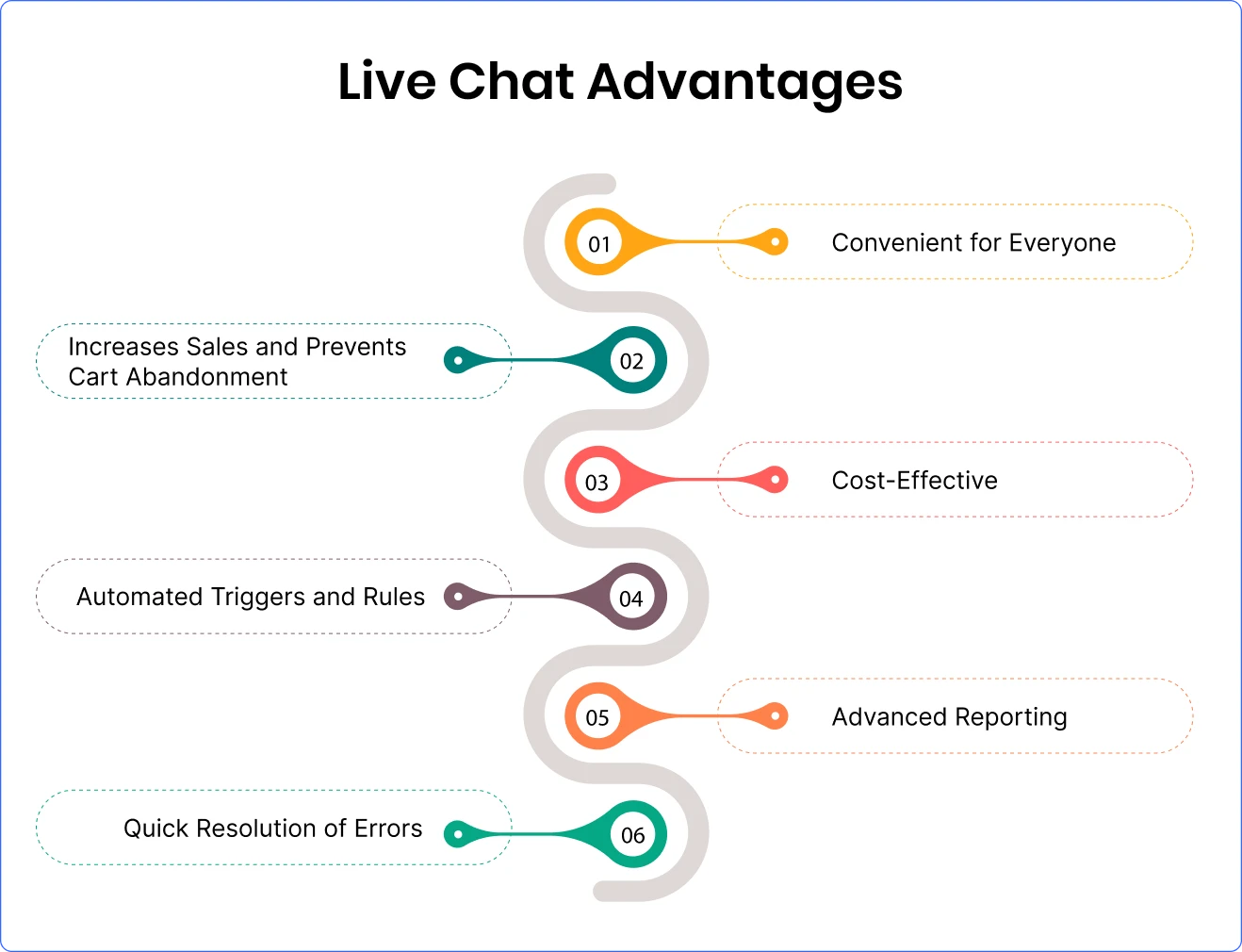
There are several benefits of Live Chat for a business. Here are some of the most prominent ones.
Convenient for Everyone
Live chat is right there on your website, making it super easy for customers to ask questions or get help. No need to switch apps or open another window—just type and go. This convenience can make a big difference in customer satisfaction.
Increases Sales and Prevents Cart Abandonment
With live chat, you can engage with customers who might be on the fence about making a purchase. A quick nudge or answer to a question can turn a hesitant shopper into a buyer, reducing cart abandonment rates.
According to a Forrester study, 44% of consumers say that having the ability to speak to an agent in the middle of an online purchase is one of the biggest advantages of live chat.
Cost-Effective
Compared to phone support, live chat can handle multiple conversations at once, making it a cost-effective solution for businesses. It’s like having one customer service rep do the job of several.
Automated Triggers and Rules
Many live chat systems allow you to set up automated messages based on customer behavior. For example, if someone lingers on a product page, a chat window can pop up asking if they need help. This can proactively address issues before they even arise.
Advanced Reporting
Live chat platforms often come with robust analytics. You can track customer satisfaction, response times, and common issues. It allows you to continuously improve your service.
Quick Resolution of Errors
Problems get solved fast in live chat. Whether it’s a wrong order or a technical glitch, customers can get immediate help, reducing frustration and improving their experience.
Live Chat Disadvantages
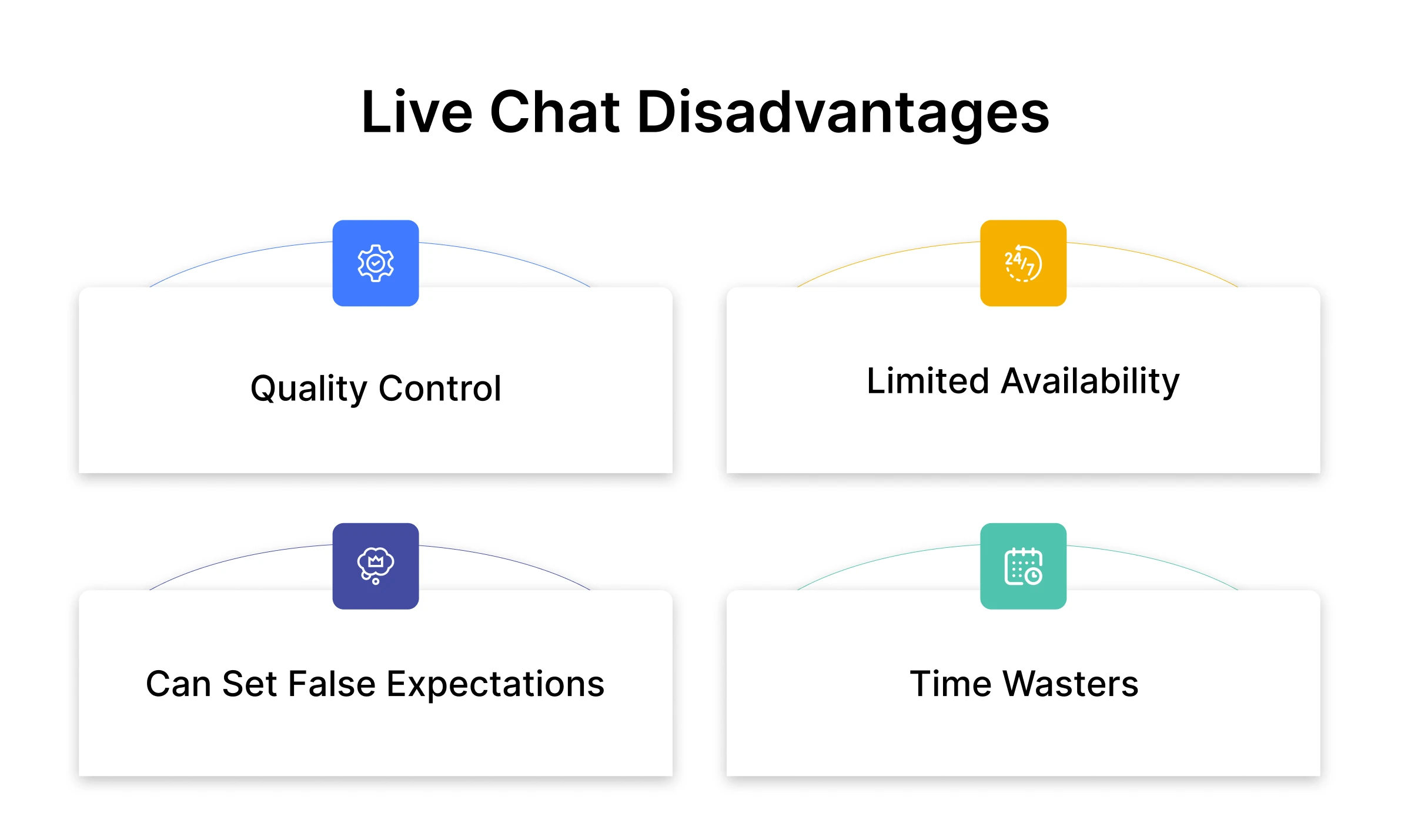
Despite these advantages, there are also disadvantages that businesses must be aware of before investing in Live Chat for their WordPress website.
Quality Control
With live chat, it’s crucial to maintain a high standard of service. Since agents handle multiple chats simultaneously, it’s easy for quality to slip, especially if they’re under pressure.
Limited Availability
Live chat typically operates during business hours, which means customers looking for help outside of these times might not get the assistance they need. This can be frustrating for those in different time zones.
Can Set False Expectations
The promise of instant help can sometimes backfire if agents are too busy or if the issue is too complex to solve quickly. Customers might expect more than what’s feasible. It can lead to disappointment.
Time Wasters
Some customers may use live chat for non-serious inquiries, taking up valuable time that could be spent helping others. This can reduce efficiency and lead to longer wait times for other users.
Instant Messaging Advantages
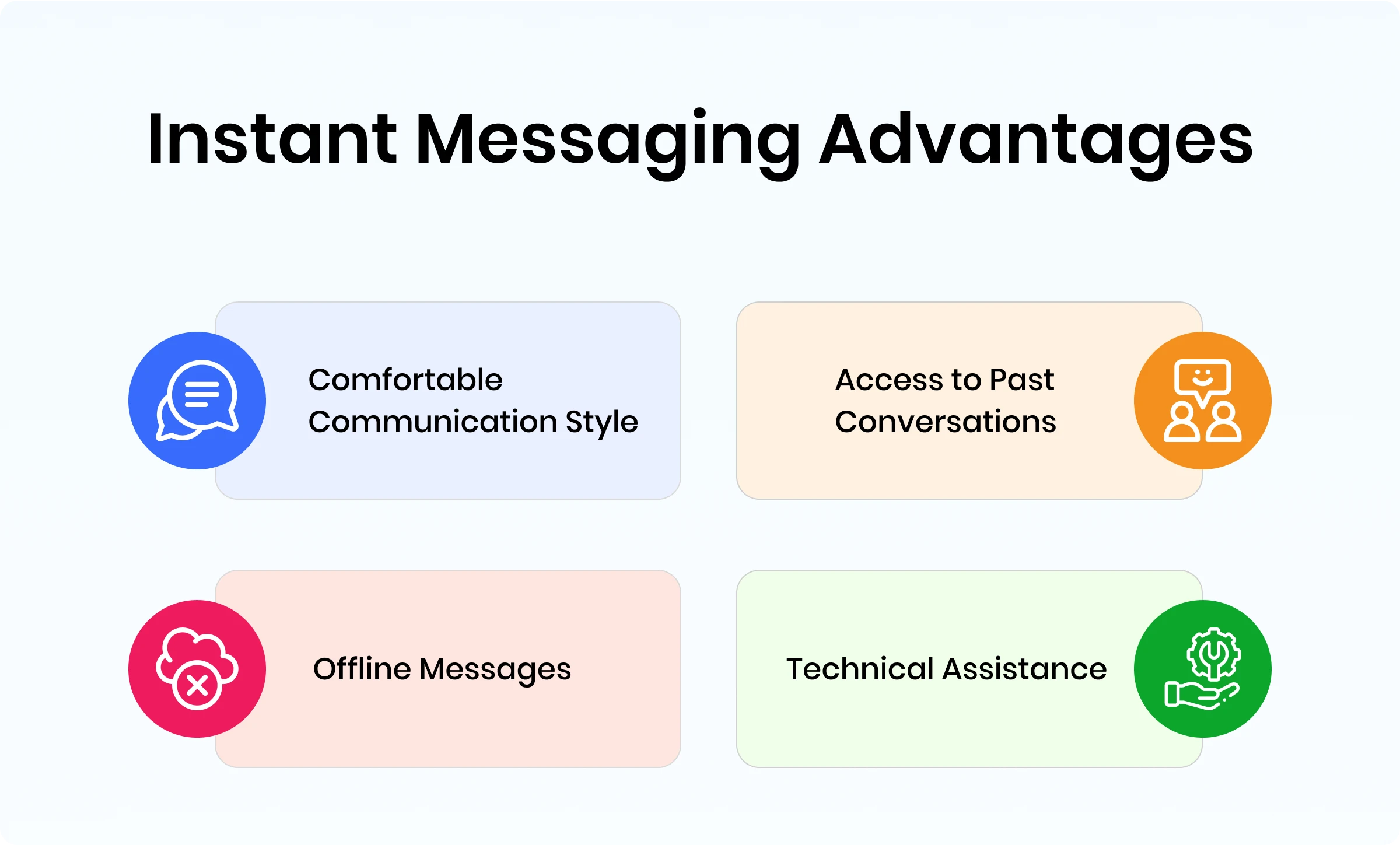
Instant messaging brings a wealth of benefits for businesses. Let’s dive into a few of the key advantages.
Comfortable Communication Style
Instant messaging feels more informal and personal, making it a comfortable way for customers to communicate. It’s like texting a friend—quick, easy, and familiar.
Access to Past Conversations
One of the best things about instant messaging is that you can scroll back and see past conversations. This helps both customers and businesses keep track of what’s been discussed, so there’s no need to repeat information.
Offline Messages
Unlike live chat, where the conversation ends when you close the window, instant messaging allows you to leave messages even when the other person is offline. This ensures that your queries or concerns are addressed as soon as the recipient is available.
Technical Assistance
Instant messaging is particularly useful for tech support, where customers can send screenshots or videos of their issues. This visual aid helps in diagnosing and resolving problems more efficiently.
Instant Messaging Disadvantages
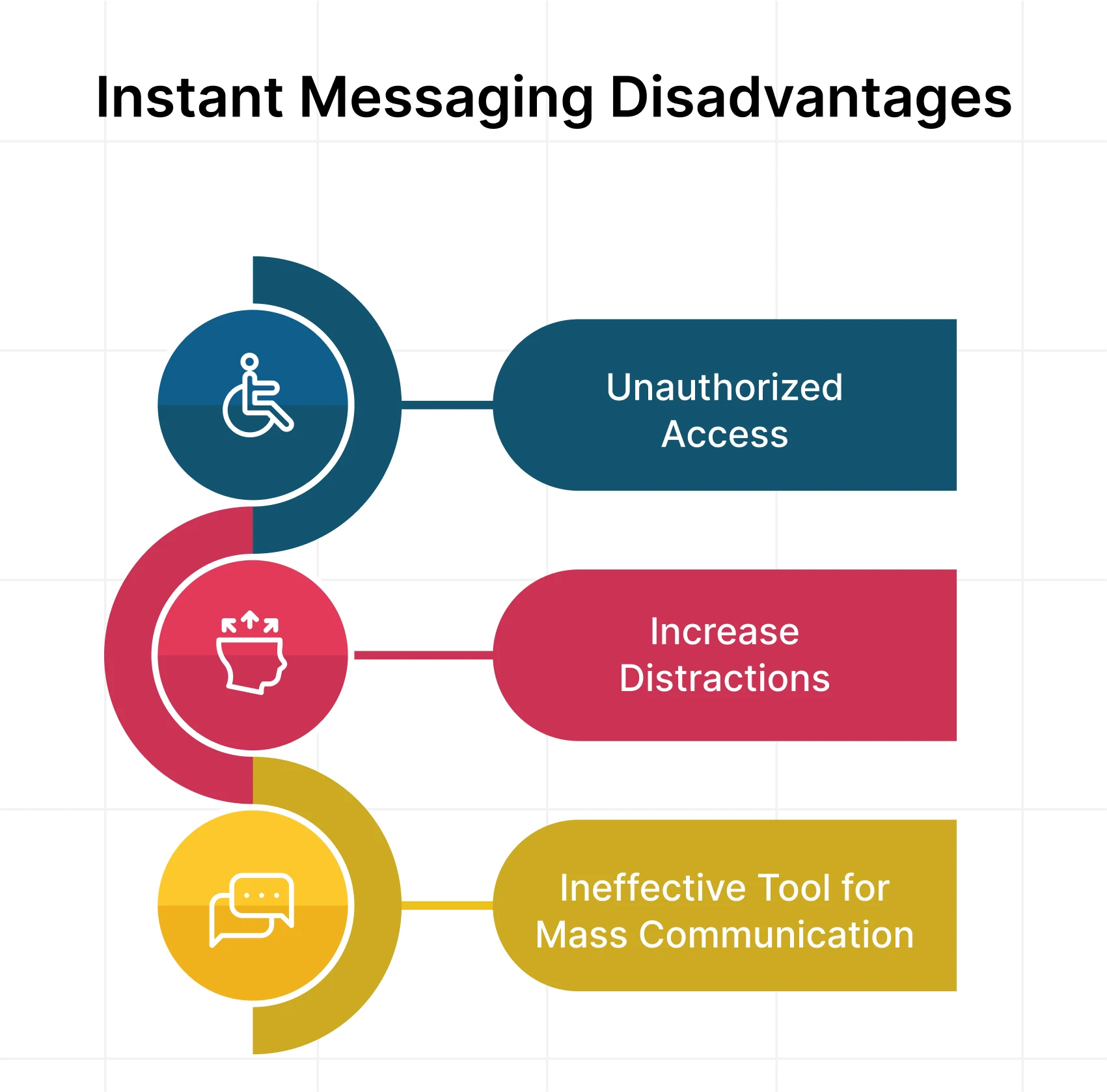
Whenever you introduce a new platform, process, or tool to your business, it’s crucial to weigh the possible drawbacks to determine if it’s the right fit. Here are some challenges that might come with using instant messaging for business purposes.
Unauthorized Access
Instant messaging apps are not immune to security risks. Unauthorized access to conversations or data breaches can be a concern, especially if sensitive information is shared.
Increases Distractions
With constant notifications and the ability to have ongoing conversations, instant messaging can become a distraction, pulling you away from other important tasks.
Ineffective Tool for Mass Communication
Instant messaging works great for one-on-one conversations, but it’s not ideal for reaching a large audience at once. For businesses looking to broadcast information to many people, other channels might be more effective.
So, which one do you think is the best?
The best one is when you combine them. You need to know that Instant messaging is the improved version of Live Chat. It has all the features and facilities of Live Chat. By merging Live Chat and Instant Messaging, you enhance their performance, capitalizing on their strengths and remedying their weaknesses.
Scenarios for Using Live Chat vs. Instant Messaging (IM)
To clarify your confusion further, let’s look at the best scenarios where you may use Live Chat and Instant messaging.
When to Use Live Chat:
Customer Support
If you’re browsing an online store and have questions about a product, live chat can connect you instantly with a representative.
Technical Assistance
Live chat can provide immediate support when experiencing technical issues on a website or app. For instance, if you’re having trouble with an online payment, a live chat agent can guide you through the process in real-time.
Sales Inquiries
For businesses, live chat is useful for answering potential customers’ questions.
When to Use Instant Messaging (IM):
Personalized Communication
IM makes conversations more casual. It is great for businesses to create a strong bond with the customers and build personalized communication. The flexibility of IM and Live Chat combinations brings a sense of comfort among the users.
Group Coordination
IM apps are ideal for coordinating activities or sharing group information. For instance, you can use Telegram to organize a group project or WeChat to share important updates with a community group.
Ongoing Conversations
IM allows for ongoing, flexible conversations. Unlike live chat, which is often used for specific issues, IM is perfect for keeping in touch over time.
REVE Chat: The Blending Strength of IM and Live Chat
REVE Chat version 4.0 has introduced the greater benefits of Instant messaging (IM) and Live Chat in one place. Now you can finally experience a customer engagement platform that caters to urgency and convenience at the same time. You no longer need to switch between apps.
Moreover, the integration of IM and Live Chat functionalities brings forth a host of benefits. Users can enjoy instant access to relevant information, prompt responses to queries, and proactive support, all within a single intuitive interface.
The Benefits of IM and Live Chat Augmentation with REVE Chat
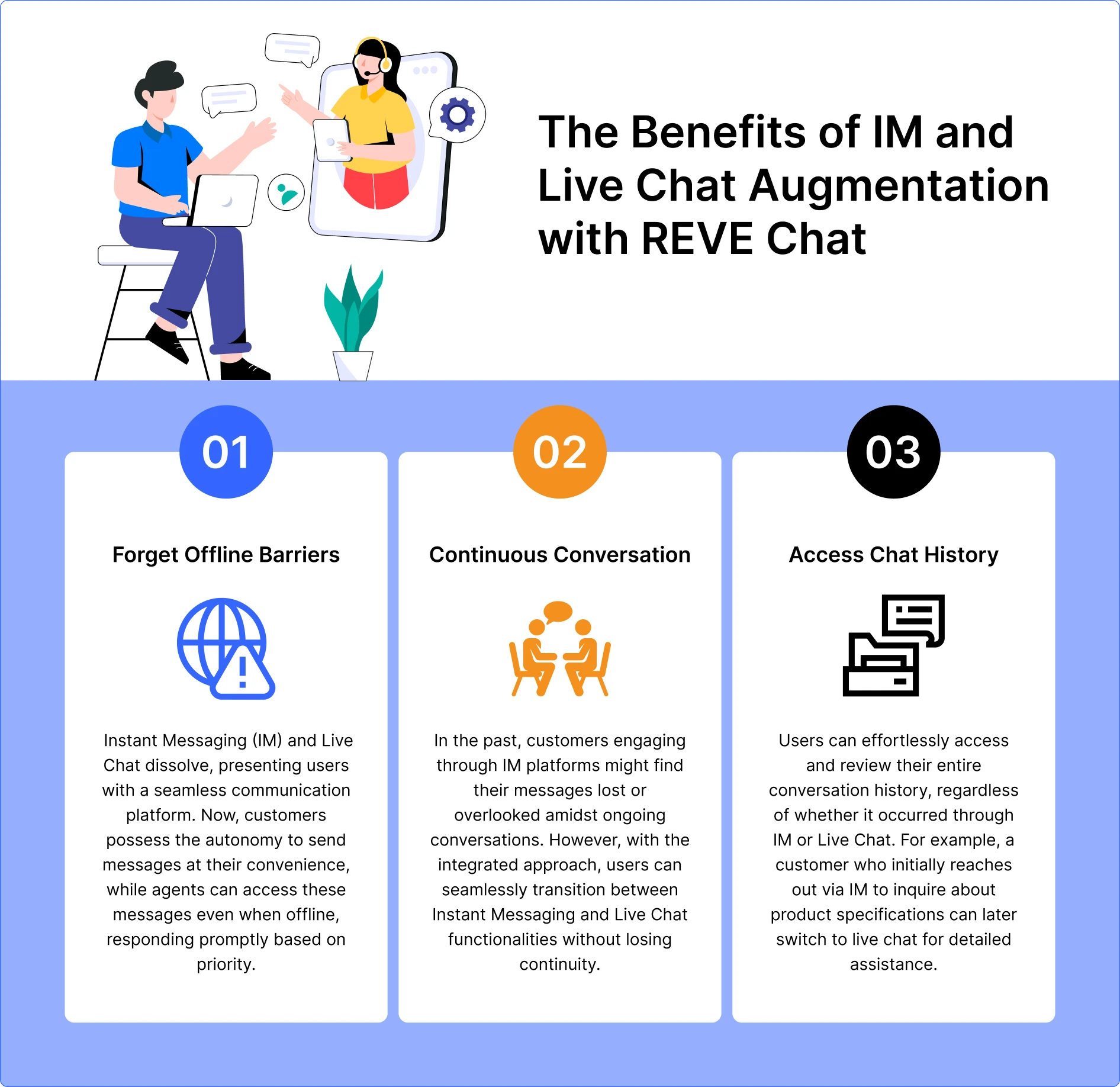
The augmentation of Instant Messaging (IM) and Live Chat functionalities with REVE Chat offers a multitude of benefits, revolutionizing the way businesses and users engage in real-time communication:
1. Forget Offline Barriers
In the latest iteration of REVE Chat, version 4.0, the distinction between Instant Messaging (IM) and Live Chat dissolves, presenting users with a seamless communication platform. Now, customers possess the autonomy to send messages at their convenience, while agents can access these messages even when offline, responding promptly based on priority.
2. Continuous Conversation
In the past, customers engaging through IM platforms might find their messages lost or overlooked amidst ongoing conversations. However, with the integrated approach, users can seamlessly transition between Instant Messaging and Live Chat functionalities without losing continuity.
This cohesive experience not only ensures that customers can continue their conversation without interruption but also enhances their overall satisfaction
3. Access Chat History
Users can effortlessly access and review their entire conversation history, regardless of whether it occurred through IM or Live Chat. For example, a customer who initially reaches out via IM to inquire about product specifications can later switch to live chat for detailed assistance.
In both scenarios, the entire conversation thread, including messages exchanged through both channels, is stored and readily accessible. This comprehensive conversation history not only enhances transparency and accountability but also enables users to seamlessly pick up where they left off.
Final Note
Live Chat and Instant Messaging stand out as two pivotal channels in customer interaction, each with distinct characteristics and advantages. Live Chat, with its real-time nature, caters specifically to customer support on websites, providing immediate assistance to inquiries. On the other hand, instant messaging fosters personal communication, allowing users to engage asynchronously at their convenience.
While both channels have their merits, the question often arises: which is better? The answer lies in recognizing their respective strengths and weaknesses and leveraging them synergistically. By merging Live Chat and Instant Messaging, businesses can create a robust customer engagement platform that combines the immediacy of Live Chat with the flexibility of Instant Messaging.
REVE Chat version 4.0 exemplifies this integration, offering users the best of both worlds. Seamlessly blending Instant Messaging and Live Chat functionalities, it eliminates the need for toggling between platforms, ensuring a cohesive and efficient communication experience for both customers and agents. Book a demo to experience it yourself.
FAQs
Why should businesses consider using both IM and live chat?
Combining IM and live chat offers flexibility, and broader reach, and caters to different customer preferences for communication.
Can using both IM and live chat improve response times?
Yes, it allows businesses to manage customer inquiries more efficiently and reduce wait times by leveraging both channels.
Which is faster: IM or live chat?
Both can be fast, but live chat is designed for immediate responses, whereas IM can be more flexible and allow for delayed responses.
Can IM and live chat work together to improve customer retention?
Offering multiple, convenient communication options can enhance customer loyalty and retention by improving their overall experience.
How can IM support live chat during offline hours?
IM can take over when live chat agents are unavailable, providing continuous support and reducing the risk of lost inquiries.

